The thing about travelling to Rajasthan is that sometimes there’s a feeling that you’ve seen it all. Jodhpur’s Mehranghar fort, Udaipur’s City Palace, Jaipur’s Hawa Mahal and Jaisalmer’s living fort are awe inspiring and iconic and rightly get thousands of visitors every year, but there’s so much written about them and so many photographs and videos online that one almost feels like there is no sense of discovery left.
So when we were planning our Rajasthan trip, there was no question that we wanted to see for ourselves some of these amazing architectural wonders, standing on the ramparts of a fort that stretches beyond the horizon is not an experience to miss, but we also wanted to get a sense of ‘real’ Rajasthan, cliche aside. The Rajasthan where the culture and life originate and pulsate, within and outside the famous forts and pretty palaces, the people and places that center the state away from the cacophony of the tourist trail.
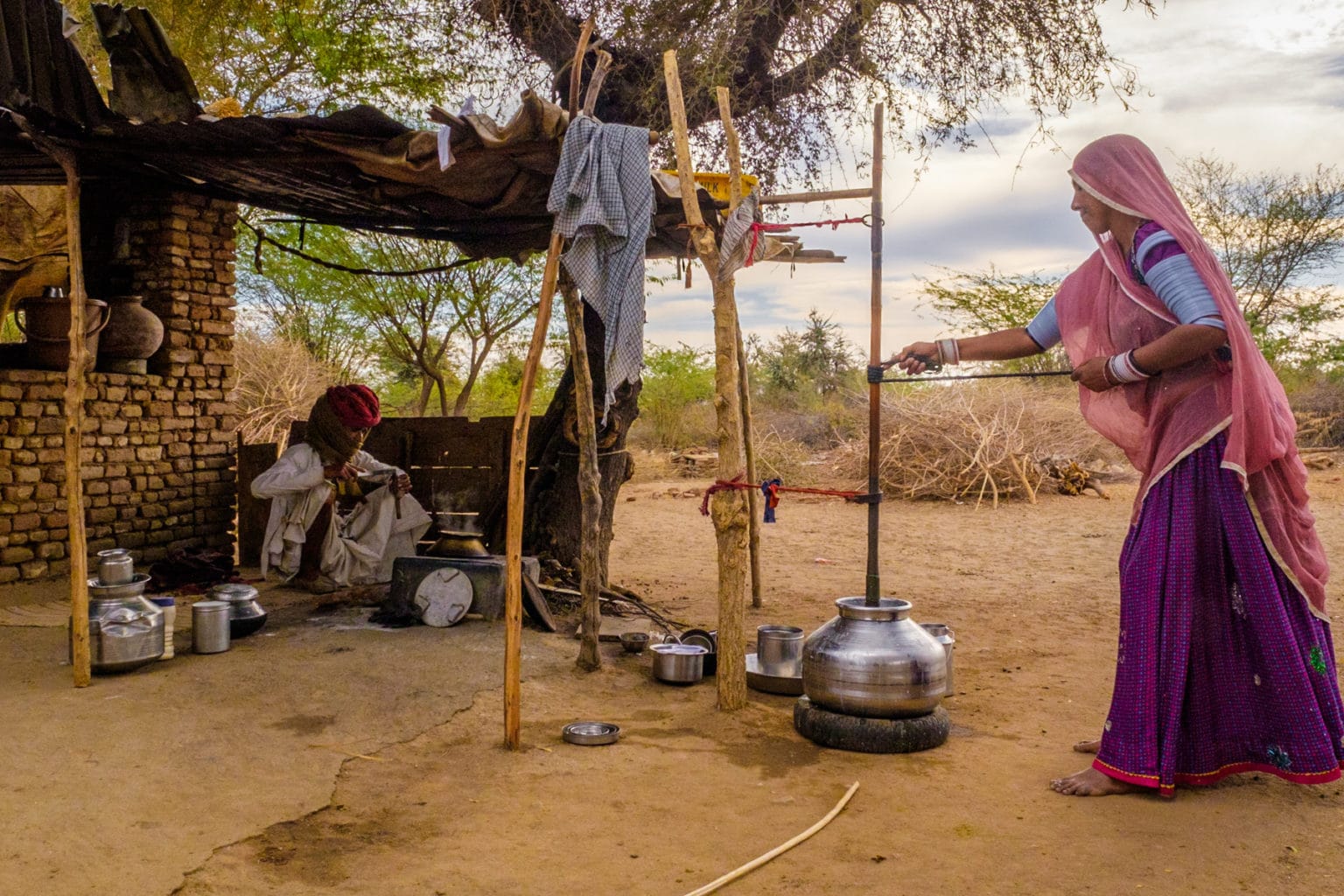
That’s when we came across the region of Godwar in Pali district. Sitting conveniently between Udaipur and Jodhpur, Rajasthan’s Pali district is hardly known and does not offer much by the way of the usual tourist attractions, but as we were to learn throughout our time there, has the potential to offer some authentic, unforgettable experiences. While we would never discount the highlights that make this state famous, there is no denying that the pulse of a people often lies in the smaller details. And so we go in search of them to understand a little better what goes into the fabric of this country and seek out organisations like Culture Aangan, a boutique travel firm that partners with local communities to offer experiential journeys, that aid us in our quest. The team at Culture Aangan helped curate an awesome few days for us, accessing experiences we simply could not have had on our own and showing us a side of the state which we would have missed, and we are grateful for it!
Live farm life and explore the rural hinterland on horseback.
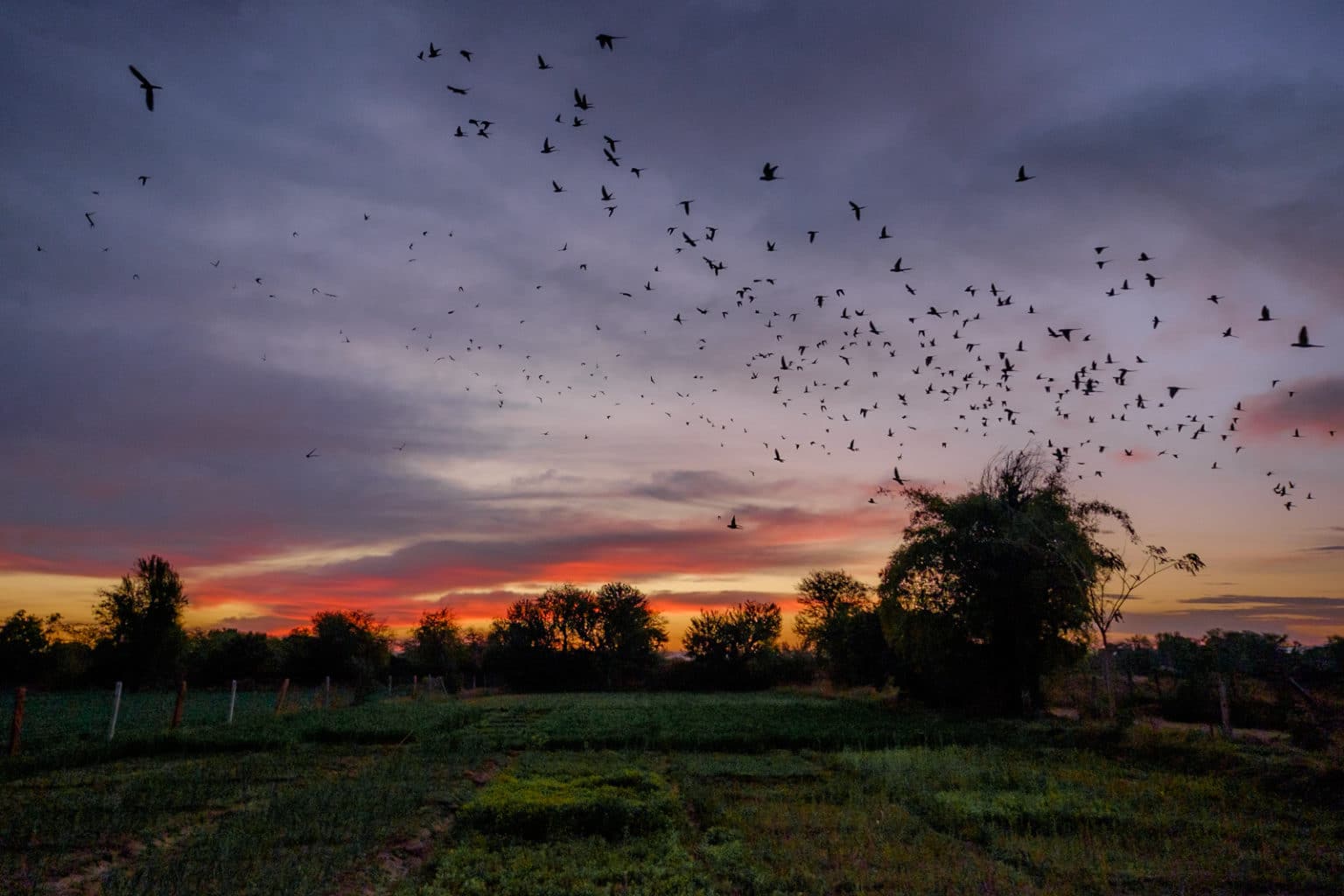
Whilst Rajasthan is all about palace stays and heritage properties, and we had a few of those, the real flavour of the state is to be found in it villages, as is the case with much of India. We love homestays and farmstays and in Pali were super lucky to stay at Rania farms, a homely little place on the outskirts of the village of Padampura. In this tiny hamlet not easily found on the map, we had morning tea on the veranda with birds for company, afternoon siesta on the charpoi and evenings filled with music. Our time at the Rania farm was special, more so because our hosts Yogendra and Pushpendra were great fun to hang out with and went out of their way to make sure we were comfortable. For us, its the people that make up a place and we felt right at home in Padampura with the family.
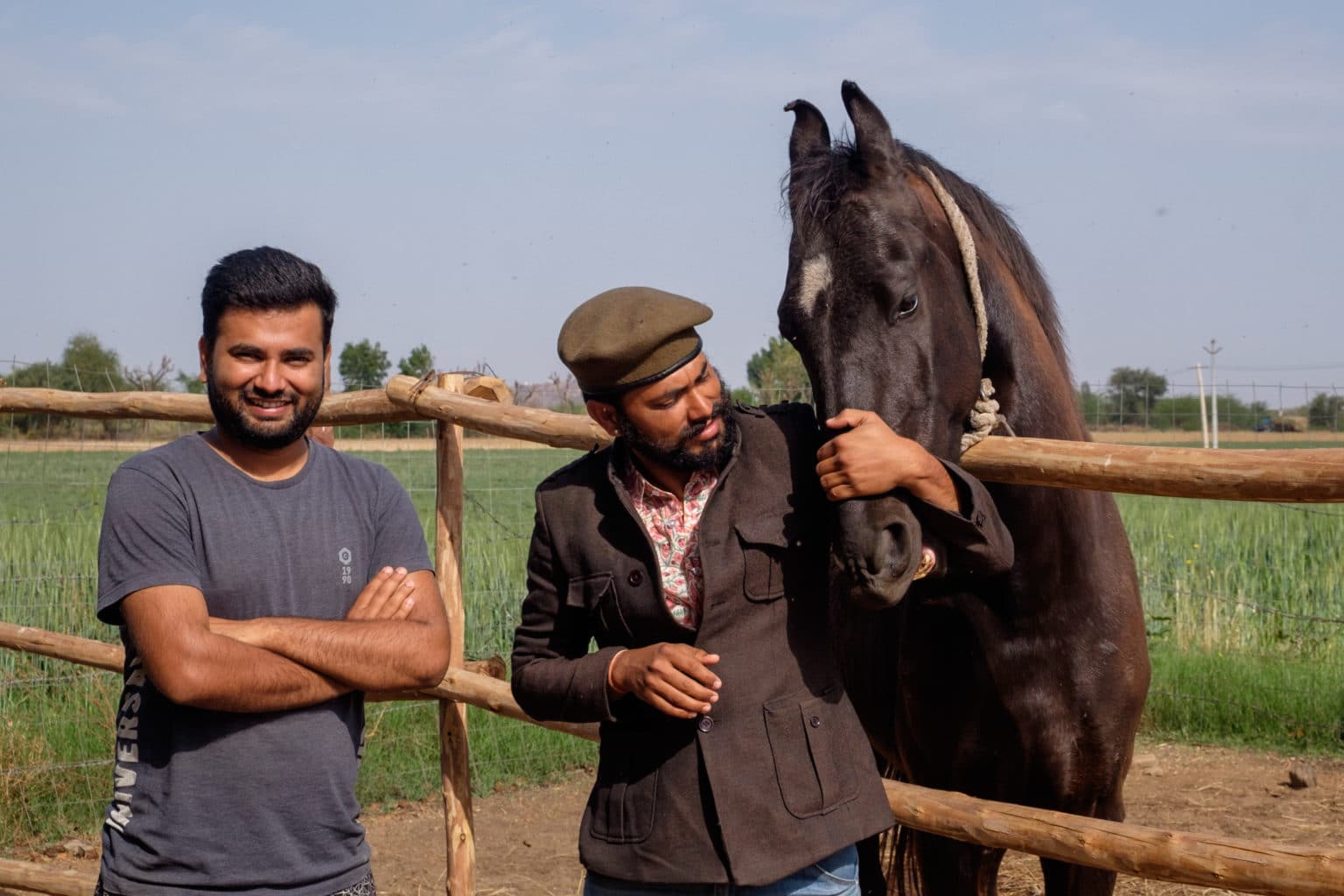
Of course, while the guys were fantastic hosts, ensuring that we really felt the pulse of the region and understood to the extent we could the mindset and historic attitude of this proud ethnic community, it was their mother that truly pampered us. We were stuffed at every meal from hot paranthas in the morning with homemade ghee to haldi sabzi (yes thats right), home grown greens and the famous Lal Maas. Each meal was accompanied by fun stories and interesting insights into the region, the people and their history, giving us an elevated homestay experience.
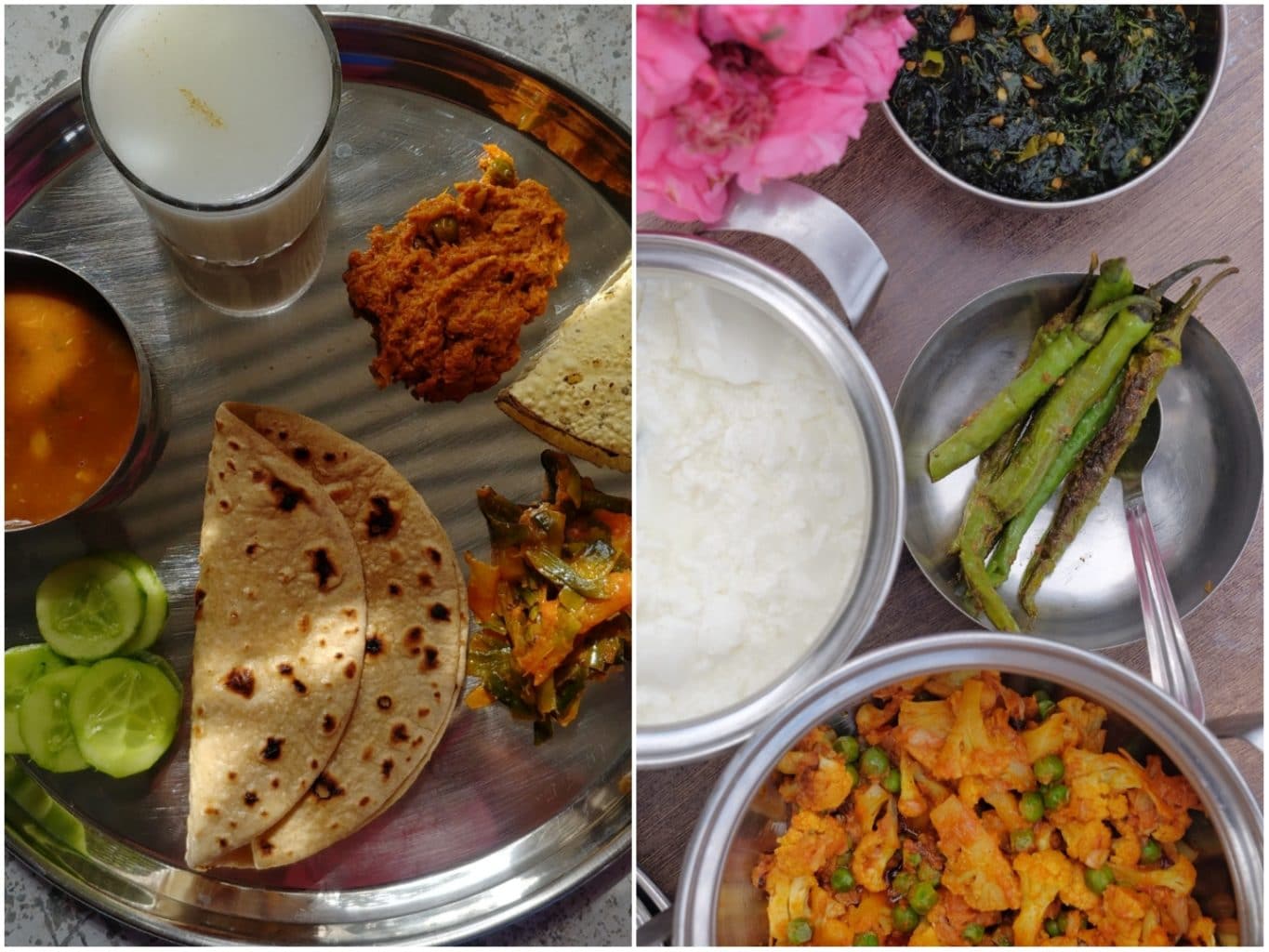
Rajasthani society is incredibly complex and multi layered and has resulted in a richness of culture. Whilst most tourist centres in Rajasthan offer cultural and musical ‘tours’, these sometime have a commercial feel to them. Here in Padampura we were lucky enough to experience the music right in the villages where it comes from. Each community (and there are plenty) has its own dance and song, featuring folk heroes, stories from the region and religion, passed down from generation to generation. Every night we spent at the farm, we were treated to something different. Whilst the music and the instruments were varied and we hardly understood the words, there was something raw, earthy and soulful about the tunes that has stayed with us even now.
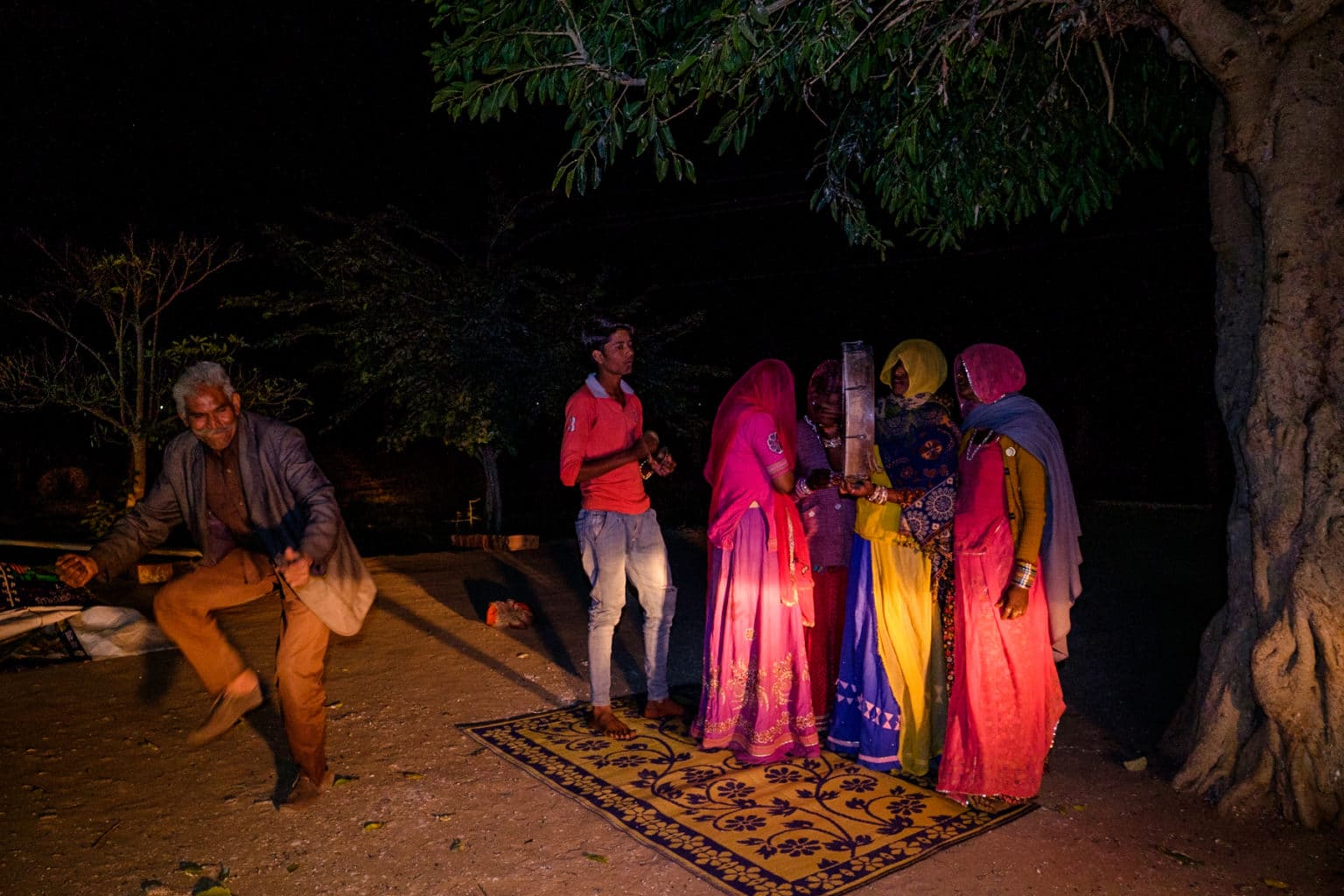
The farm itself was lovely, surrounded by green fields as far as the eye could see, where the family grows everything from wheat and vegetables to trying their hand at organic quinoa. Ancestrally the family has been involved in the breeding of Marwari stallions and with Pushpendra we explored the village and surrounding areas on horseback, just like they probably did in the days of yore! Sitting astride his magnificent sleek stallion with a leather jacket and hat, one could image Pushpendra surveying the land ensuring all was well or conducting one of his 10 day long horse safaris across the state. The idea of a long horse safari is fascinating and intriguing but we’re not quite sure about sitting on a horse for hours on end, as magnificent as they are! All said and done, it was truly one of our most memorable experiences in Rajasthan.
Hang out with the Rajasthan’s Rabaris, one of the most fascinating tribes in India
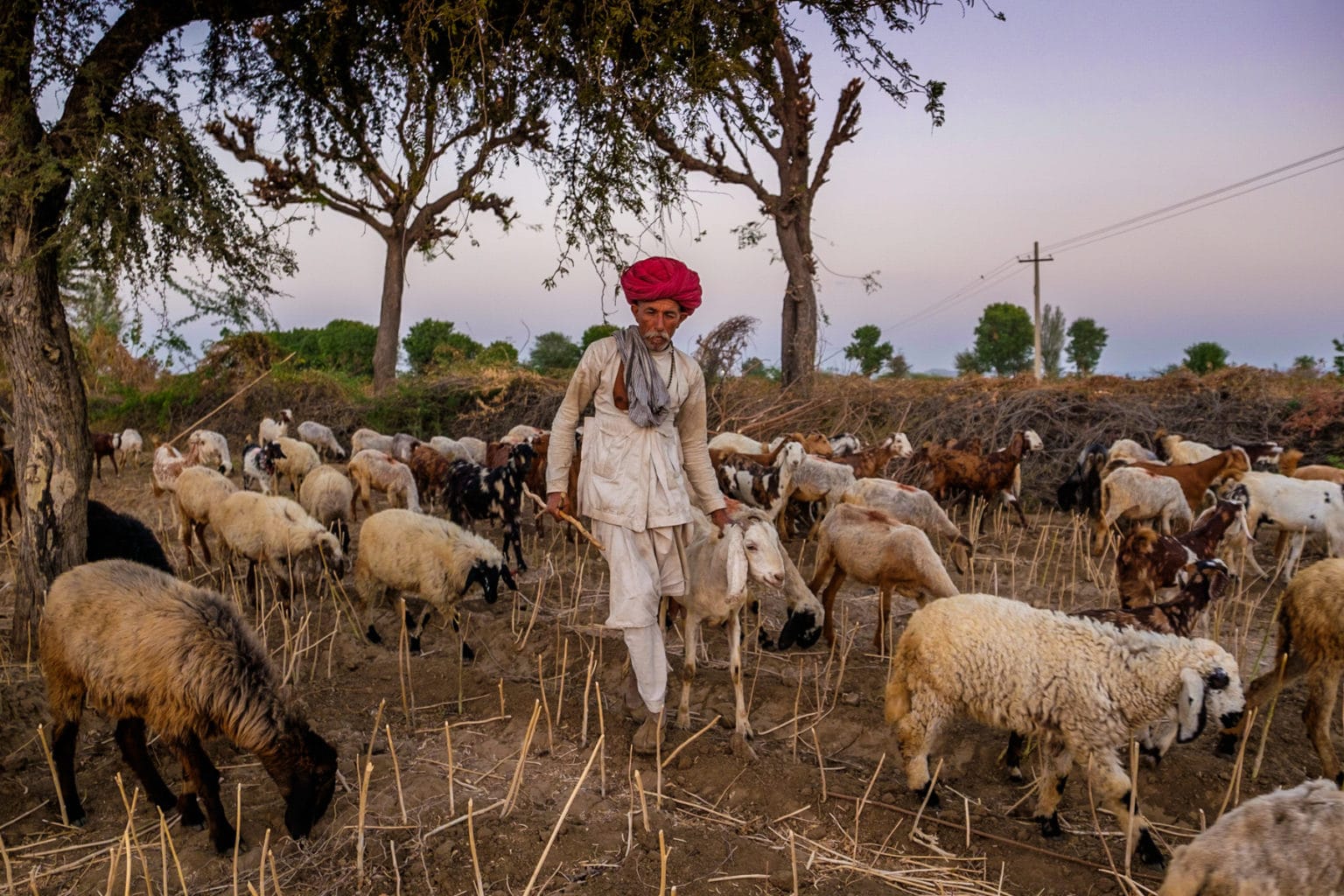
From the time we saw photos of the Rabaris of Rajasthan in a Steve McCurry photo book, we have always been fascinated by this pastoral community. The Rabaris, distinctive for their white angarakhis topped with a large red turban, live life much the same way they have for generations, leading their flock of sheep and goats for hundreds of kilometres across the plains of north western India, in an annual ritual of migration in search of green pastures. We have had chance encounters with them in the past, crossing highways in Gurgaon where fields once stood, on the backroads of northern Madhya Pradesh and in places like the Pushkar Mela.
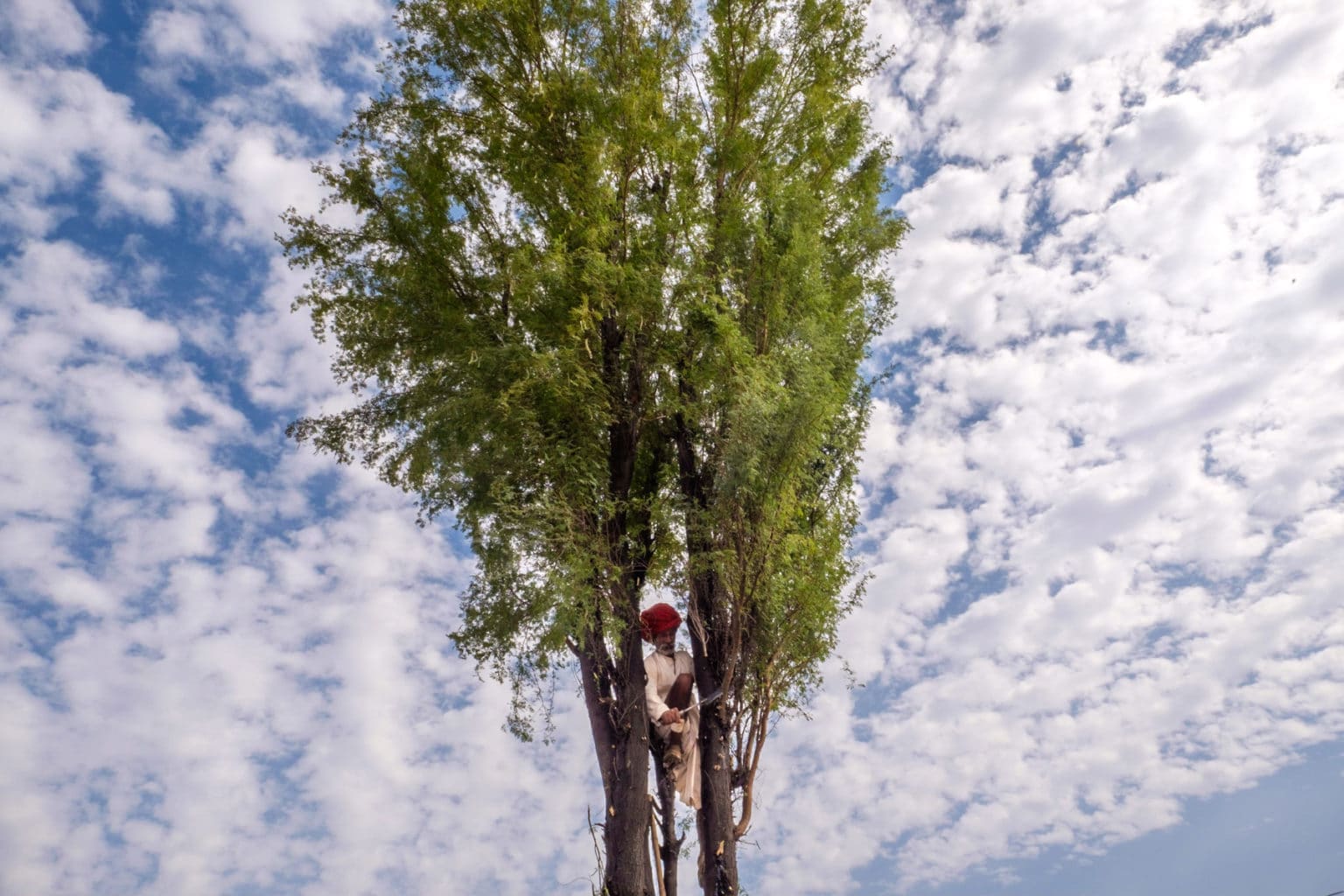
This time however, since we were staying in Pali district, one of the major districts of the Rabaris, with Pushpendra as guide, interpreter and general ice breaker, we had the chance to meet and interact with many of them, right in their villages. Over the few days we had countless cups of tea in Rabari homes, participated in their fascinating opium ceremony, walked with the herds and made lots of wonderful photos.
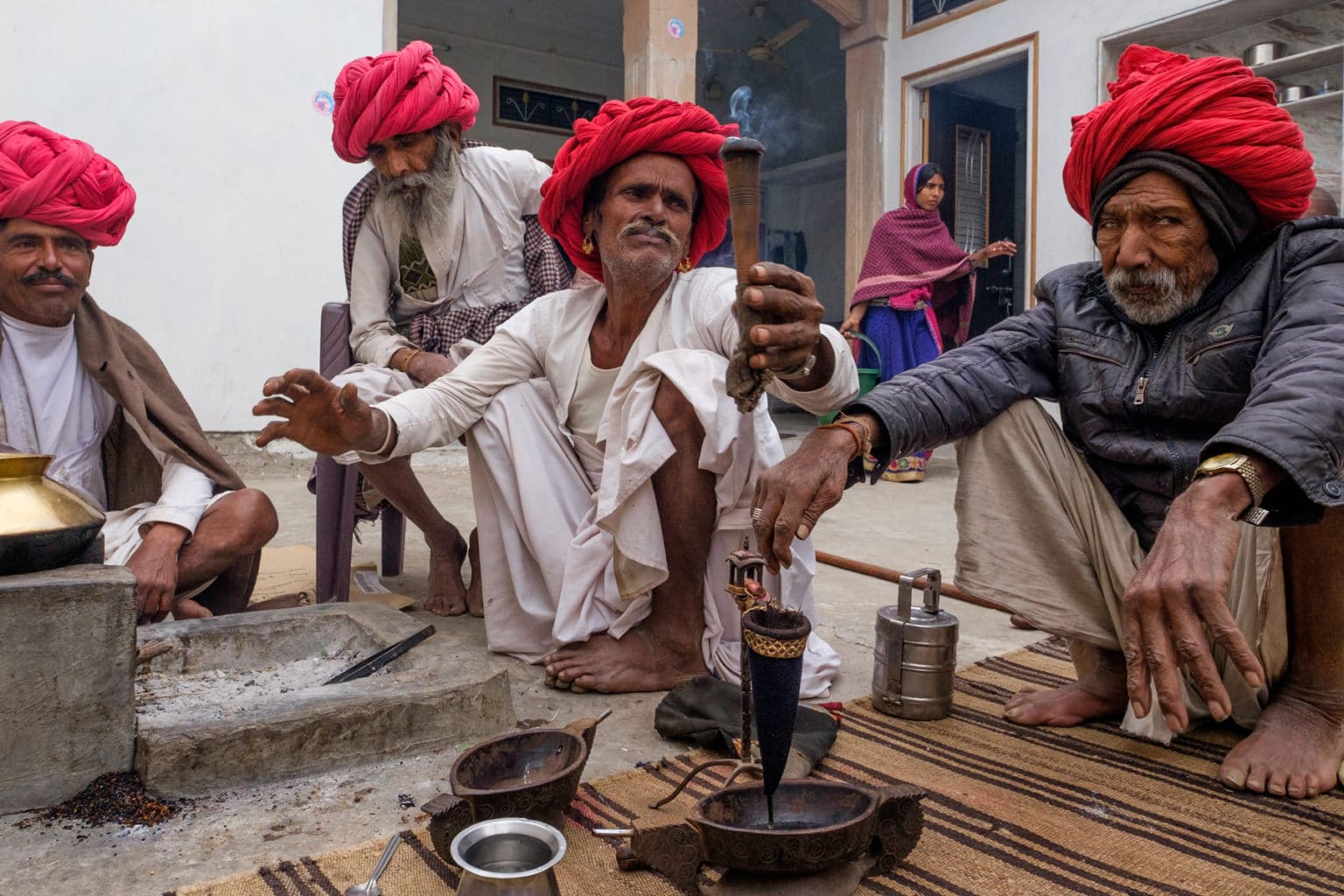
And yes, we did try some for ourselves! 😉
The last few decades have seen an exodus of locals moving to the cities for better job opportunities and it is not uncommon to drive through small villages to find them largely empty, with a disproportionate number of older folk and children, all the able bodied have left. In this fast changing world, where modernity and development has affected centuries old customs, way of life, and ecosystems, the Rabari’s are one of the few communities we have met in our travels that are attempting a balance. They still believe in a pastoral system and travel far, living in tune with the land and changing seasons but many live in large ‘pucca’ homes and stay in touch with their kids studying or working in the cities with Whatapp video calls!
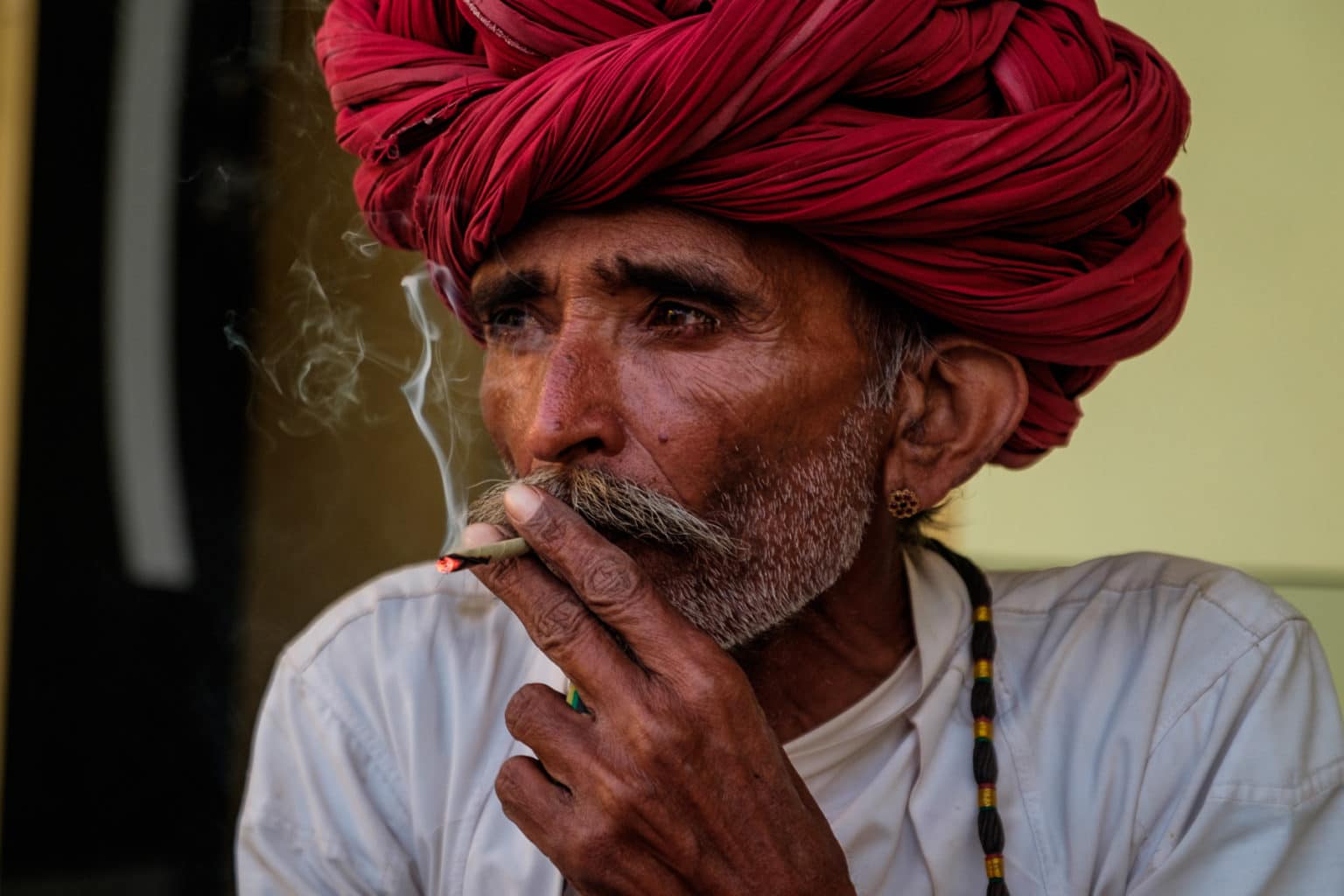
Go on a Safari in the Leopard Hills of Jawai
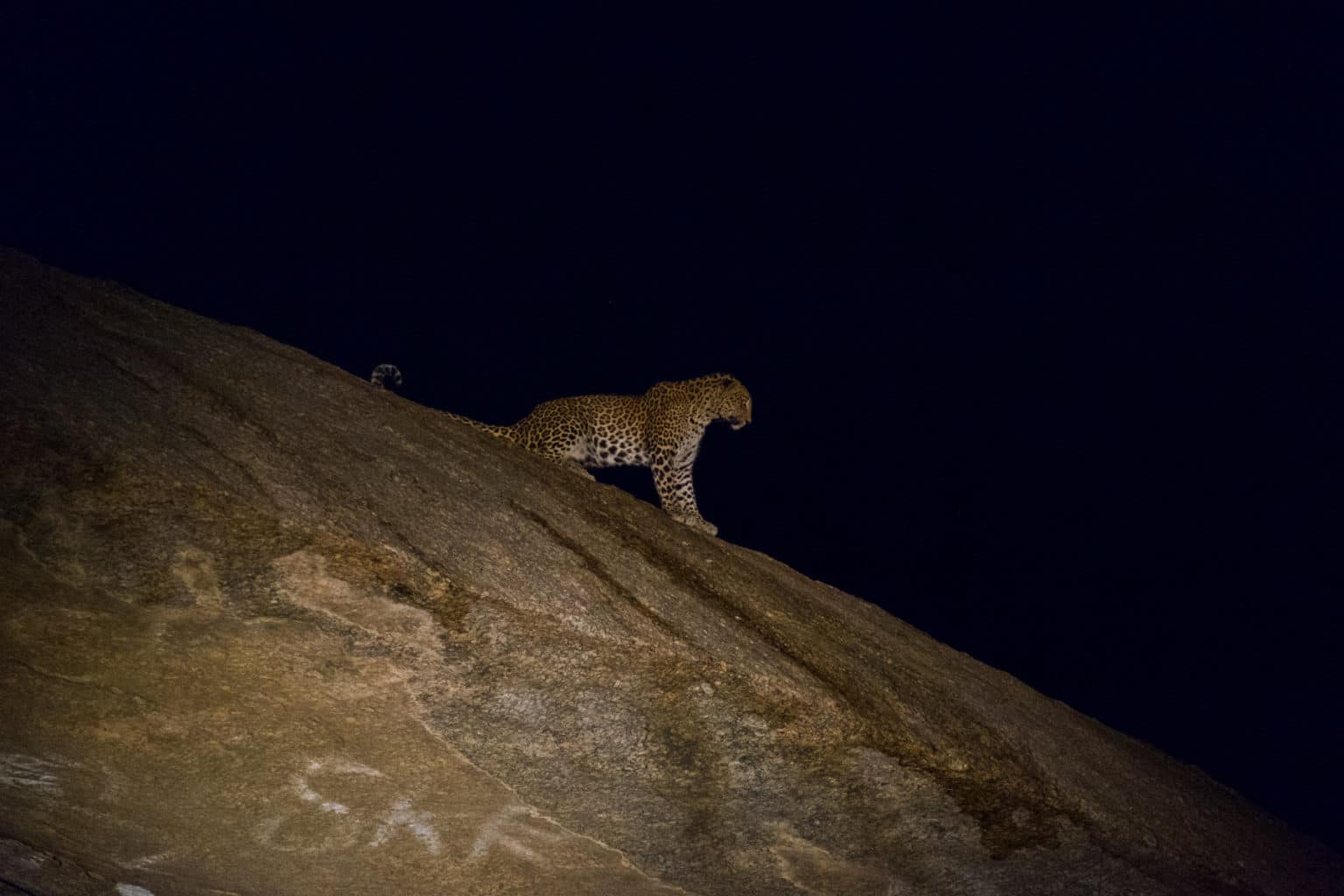
Jawai is one of the most underrated destinations in Rajasthan and despite the fact that it is fast gaining popularity, remains largely fairly uncrowded and untouched. A stunning landscape with smooth granite hills, full of caves and craters, overlooking the picturesque Jawai dam, this region is said to have one of the highest density of Leopards in India, despite it not being a protected sanctuary. Interestingly the Leopards of Jawai, exhibit behaviour unique from their brethren, they live in communal settings and it is said that there is almost no man animal conflict here despite there being several temples and villages in the area!

When we set out for the Safari we were told that Leopard sightings here are very common, and villagers are fairly used to the Leopards and though we were skeptical, true to Jawai’s reputation we saw not one but two Leopards together, that too in a beautiful setting atop a temple set in the granite hills. We also saw a jungle cat and a fox whilst driving back to our lodge, quite a successful safari drive! What makes Jawai different from other Leopard habitats in Rajasthan like Ranthambore and Sariska is the fact that as it is not an official sanctuary, one can take drives late in the evening, when the Leopards typically emerge from their caves to hunt, so you really get to spend as much time with the cats as you want!
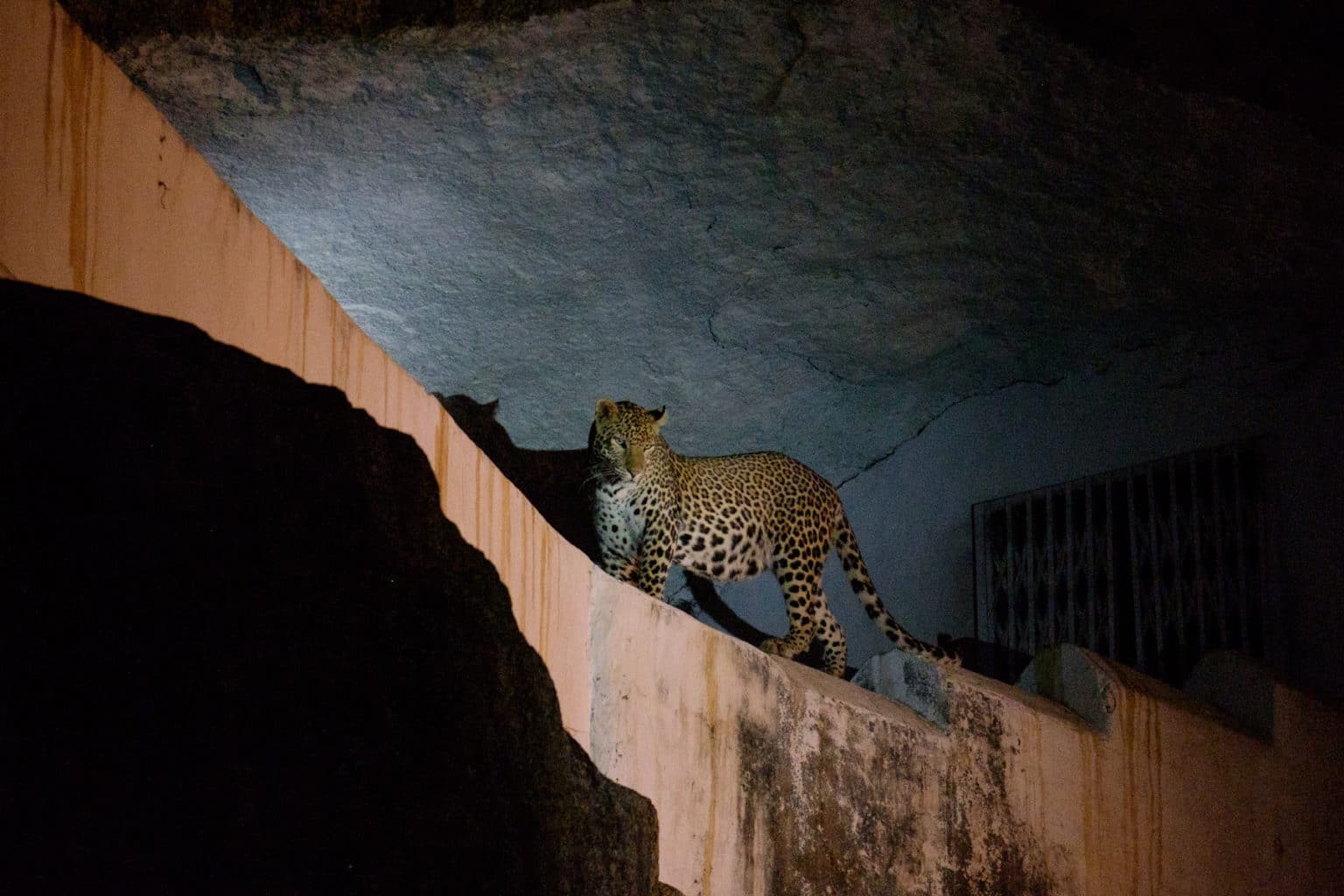
The only thing we want to point out is that if you are going to Jawai do make sure you choose an established Safari lodge and not one of the tour companies offering day trips and guaranteed sightings. These companies, in the quest to offer sightings follow practices that are not conservation friendly including getting too close to and shining powerful search lights directly at the Leopards at night, which disorients and disturbs them.
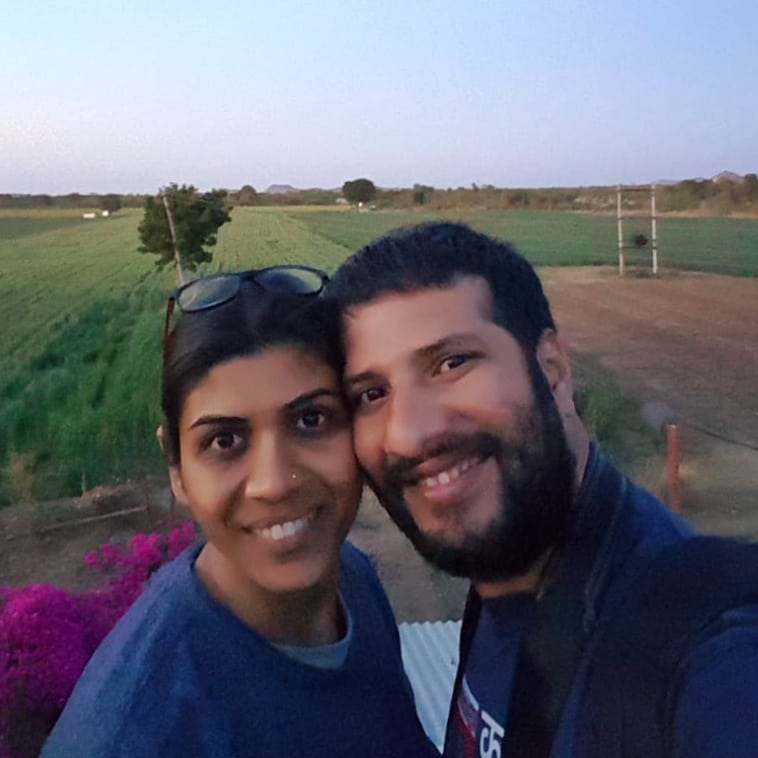
Whilst Rajasthan is a state of superlatives, where everything is larger than life, it was our time in Pali with Culture Aangan where we got up close and personal with the real Rajasthan and it is this experience that will stay with us, long after the forts and palaces have faded from memory.